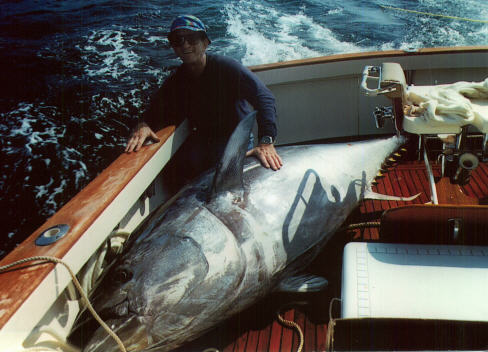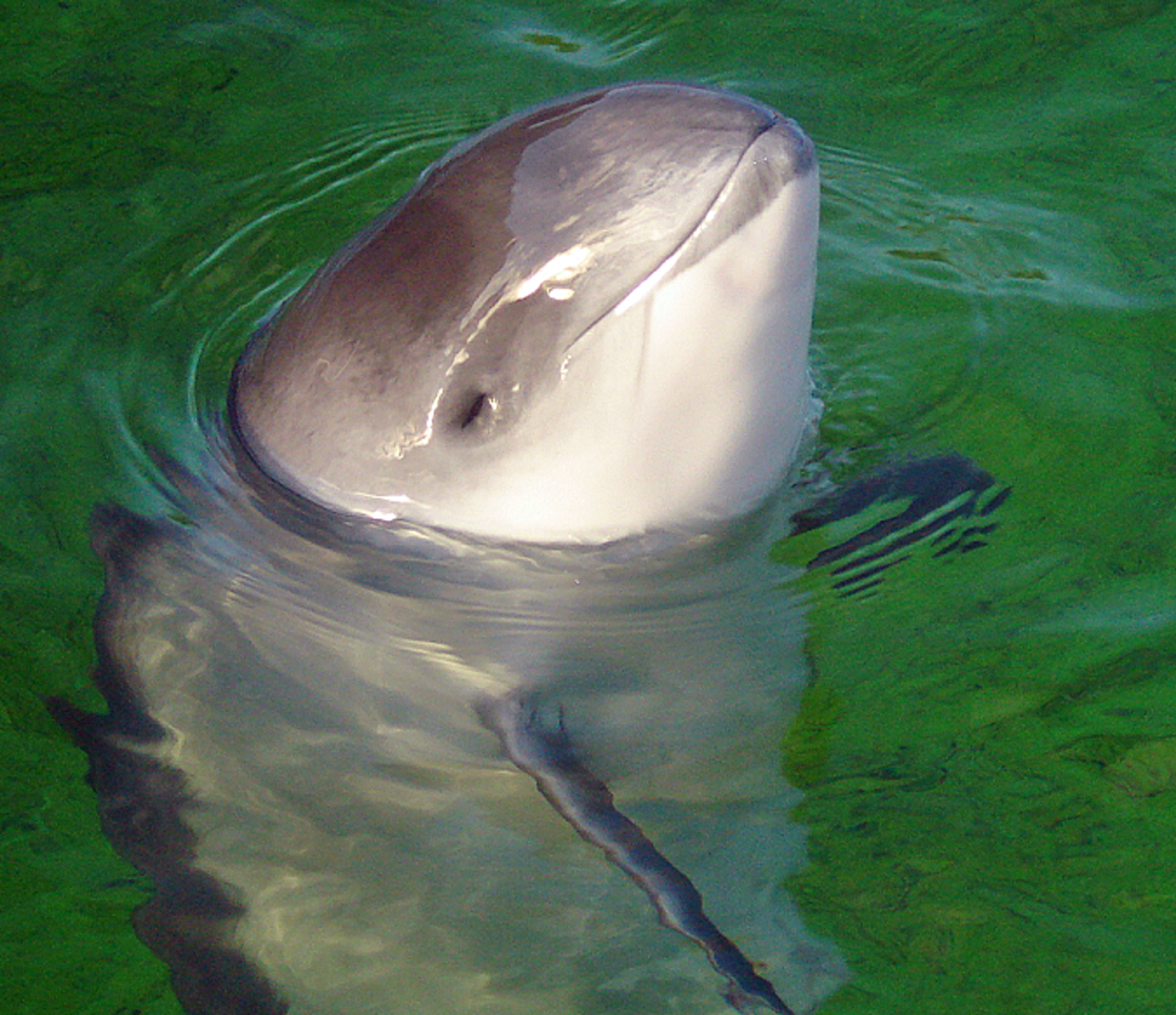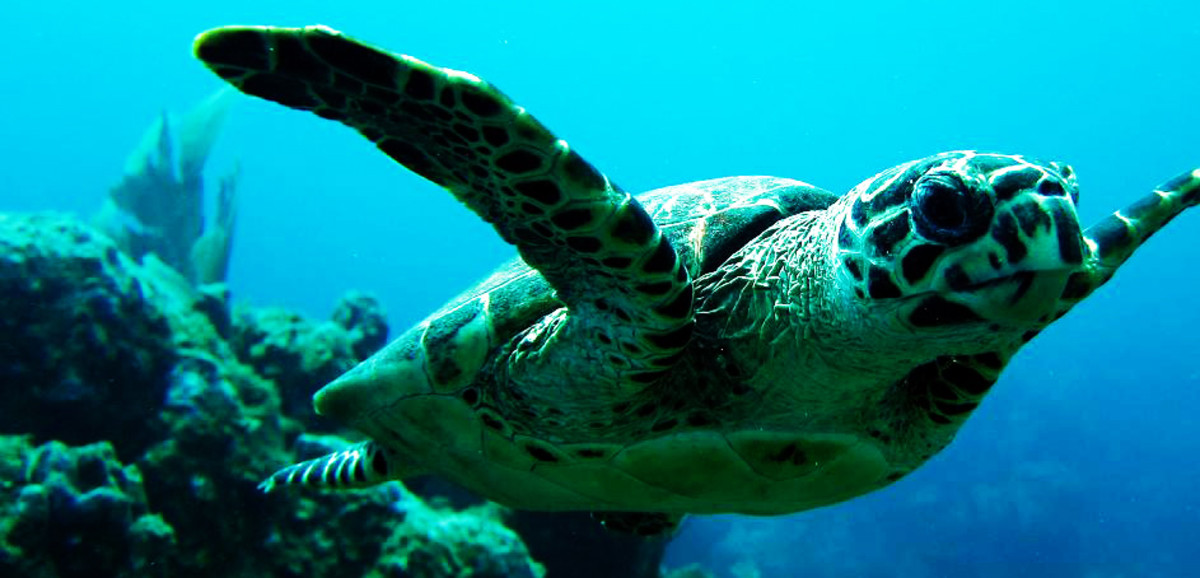The Endangered Bluefin Tuna

The Bluefin Tuna is a critically endangered species.
For the first time in its history, the United Nations are considering a ban on all tuna fishing in the Atlantic Ocean and Mediterranean Sea.
The endangered bluefin tuna's population has reduced by a massive 93% in the last thirty years, mainly due to overfishing.
90% of the fished tunas end up as sashimi or sushi in Japanese restaurants the world over. They currently fetch a price of $200-$300 per kilo (2.2lbs).
Atlantic Bluefin Tuna
Fully adult, the Atlantic bluefin tuna (Thunnus thynnus) are typically between 2 - 4 metres in length, and can weigh up to 680kgs, though the average is 250kgs.
When chasing prey they can reach speeds of up to 100km/hour (62mph), and can accelerate faster than a Porsche!
The name 'tuna' comes from a derirative of the Spanish word 'atun', but only came into accepted usage 100 years ago.
Unlike most other fish, the tuna are warm-blooded and so can regulate their body heat when swimming in bitterly cold waters.
Bluefin tuna fishing video

Over-Fishing of the Bluefin Tuna
Whilst prized by sports fishermen, it is the commercial fishing of bluefin tuna that has reduced their stock numbers by so large a number.
In Europe, French, Italian and Spanish fisherman compete with their North African counterparts for their share of ever-dwindling stocks. In actual fact, Spain, France and Italy's catch account for half of the total allowable global limit.
A massive 90% of their catch gets exported to Japan for very high sums of money.
Many of the fish that end up in Japanese restaurants are immature, the seas having been all but cleansed of the adult populations.
It is believed a tuna larva has a 1 in 40 million chance of reaching adulthood. For those that do survive, they can live for 30 years, being near the top of the oceanic food chain. The only species above them are sharks, some whales and of course, humans.
Bluefin tuna fish breeding
It is believed that 30% of all Atlantic bluefin tuna regularly cross the width of the Atlantic Ocean in search of food, and that it takes them on average just 60 days to complete a crossing, and that some of them even make the crossings several times a year.
The spawning grounds of the Atlantic bluefin tuna have been identified as the eastern Mediterraean area around the Balearic Islands and the Gulf of Mexico. It is widely believed that although the bluefin tuna travels the full width of the Atlantic Ocean, they return to the same spawning area to spawn.
Because they collect in large numbers at this time, they are easily detected by light aircraft which then direct purse seines, special types of trawling fishing boats, to the area to catch all of them, thus reducing their breeding potential further.
Endangered bluefin tuna video
Conservation
In 2007, researchers from the International Commission for the Conservation of Atlantic Tunas (ICCAT), the body set up to regulate the northern bluefin fishing industry, recommended a worldwide limit on tuna fishing to 15,000 tons. ICCAT then set a limit of double that amount, later further reducing the figure to 22,500 tons,which is still way over the sustainable limit.
Their own scientists now advise them that the global figure should be 7,500 but the latest annual figure puts the actual fishing figure at 60,000 tons.
ICCAT, according to scientists the world over, has been dubbed The International Conspiracy to Catch all Tuna, so poor is their record for actually conserving the species.
What Can be Done?
This March, in the year 2010, CITES, the Convention of International Trade in Endangered Species meets in Doha, Qatar, to discuss an all out ban on tuna fishing until the tuna stocks recover.
175 countries in attendance will vote on whether or not to implement a ban. To be passed, there must be a two-third majority.
The European Commission representing 27 countries have provisionally agreed to a ban, dependent on the latest report from the ICCAT on fish stock numbers, which unfortunately cannot be considered to be representative of the truth seeing as the true extent of the loss of the North Atlantic Tuna is subject to figure manipulation.
Where money is involved, invariably corruption follows.
Spain, Italy and Malta with huge commercial interests in the bluefin tuna voted against the EC directive, while France, the UK, Germany, the Netherlands and Austria all backed the plan.
The World Wildlife Fund (WWF) are extremely concerned for the future survival of the bluefin tuna as they have already been made extinct in both the Black and North Seas.
_______________________________________________________________
________________________________________________________________
Some countries have opened fish farms, rearing bluefin tuna destined for the food market. Spain is one of those countries as you can see in the video below.
Unfortunately they have not been able to breed them in captivity, so they 'collect' the tuna when they are travelling in shoals and fatten them up in the sea pens erected for them, then shoot them when required.
Again this is huge money making industry into which millions of euros have been invested, but one which will ultimately do nothing for the stocks of tuna in the seas.
Spain's MEP's are at this moment strongly resisting moves by CITES to ban Atlantic shortfin tuna fishing.








